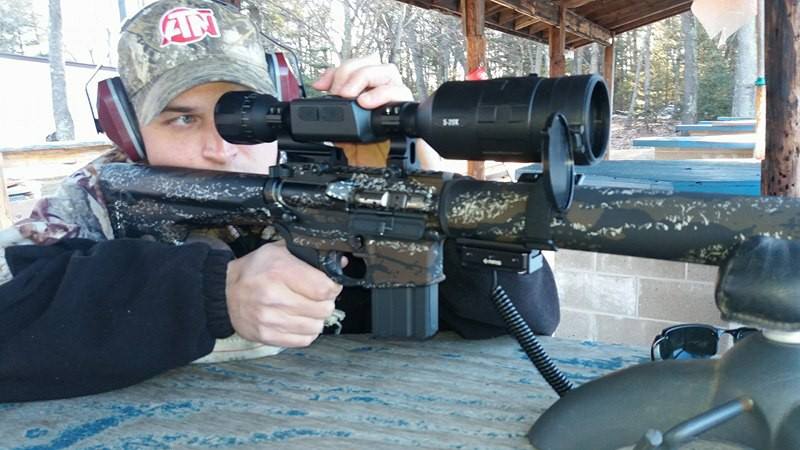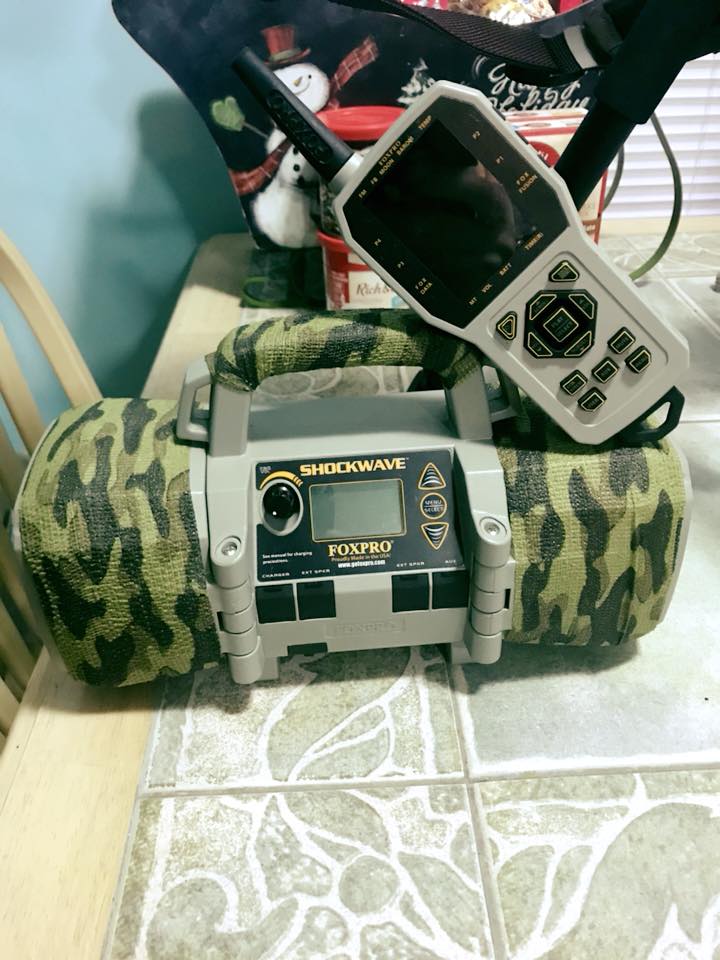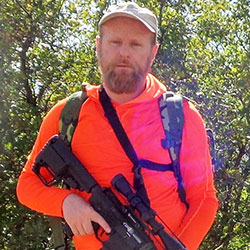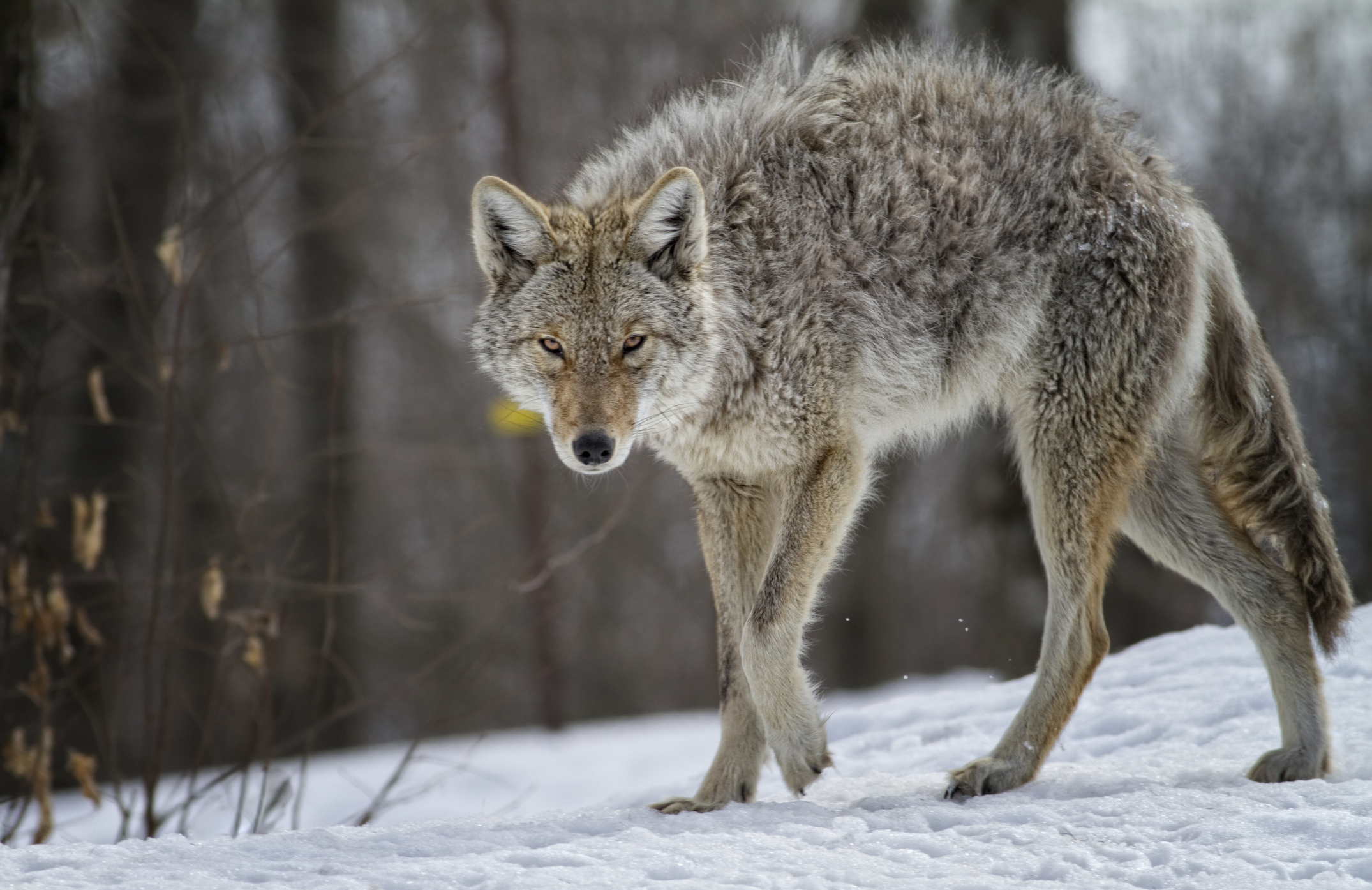Coyotes are almost everywhere in North America.
Whether you are hunting the arid southwest, the frozen northeast, or the heavily wooded northwest, coyotes have become an ever-growing nuisance and in the process have become a great sport hunting pastime.
Coyotes can cause damage to a variety of resources, including livestock, poultry, and crops.
They sometimes prey on pets and are a threat to public health and safety when they frequent airport runways and residential areas and act as carriers of rabies. Usually, the primary concern regarding coyotes is predation on livestock, mainly sheep, and lambs. (Source: ICWD)
In this article, we interviewed Joshua Mapes of Overdrive Outdoors, winners of the 2018 Great Lakes Predator Challenge. Josh and his team have been hunting coyotes with AR Hunting Rifles for a while, and in this article, we outline some key tips taken from an audio interview that keep him in the game with little wasted time or effort.
Click below to listen to the recorded interview.
1. Ground
“Go big and try to find the ground you need for the hunting style you use,” says Mapes. “You may have fresh batteries, the right gun, optics, did your homework, and are dressed and in a set to kill, but none of that will help you if you’re not sitting in a location that has coyotes.”
Fresh and active sign in the area you’re planning to hunt must be present if you want to shoot coyotes. Look for sign to confirm that your efforts have the best chance of success. Get permission from private landowners and find the places that will help you tally up more shots and more fur.
2. Digital Scouting
Maps and digital apps like OnX—are definitely a critical part of what Mapes uses on almost every hunt. The great part about terrain and weather apps is that they can be checked right from your living room or while you’re driving between sets and locations. Josh does a great deal of digital scouting and planning using his preferred apps prior to heading out for a hunt. Checking weather and wind conditions before he firms his hunt is a matter of habit; even en route he checks them—which might warrant a change of plans. The wind, weather, temps, precipitation, etc. can all be different than your location, and you need that information to make a sound decision. Use technology to help you get the fur numbers you want.
 3. Calibers and Optics
3. Calibers and Optics
Two things come to play when Mapes thinks about guns and gear: caliber and the optics. “Caliber is important, because like anything else you need the right tool for the job,” says Mapes. Caliber comes into play when you consider your engagement distances, accuracy, lethality and fur considerations. Mapes has some thoughts on what makes the right caliber for stopping your coyotes and stacking the fur more easily. He also has to abide by the rules, and there are rules that also place caliber restrictions on some of his hunts.
Calibers like the .17HMR work OK under the right conditions, but it’s a narrow field for specific hunting styles or environments (sometimes even due to restrictions which Mapes discusses more in the audio).
In ARs, the 5.56 will work fine and the ever popular 6.5 Grendel is surely getting it done, but Mapes has a soft spot for his .243 Win as his workhorse caliber when nothing else holds him back. He now uses an AR15 chambered in .22 Nosler that gives faster follow-up shots on doubles, less recoil, and an overall more modern setup.
Optics are essential for obvious reasons and stand side by side with your rifle of choice. Whether using your optic for day work or night work, chose your brand based on overall clarity, distance performance, environmental conditions (like heat/cold/fog/precipitation), and of course accuracy. Mapes does a great deal of night hunting, which he explains more in the audio. He likes ATN Corp scopes for their night and day capabilities.
4. Cover vs. Predator
Cover isn’t always as important as it is when using some basic “think like a predator” knowledge to be successful. Mapes has learned not to skyline himself when ordering up a set. He also likes to use available natural cover to blend in and break up his profile.
If you have two inches of snow on the ground – don’t be the dark spot on the hillside. Predators have home-field advantage—so Mapes likes using all the resources he can including cover. Also, hunting primarily at night helps him work his style of hunting. Mapes advice: “Predators survive by noticing things… don’t be noticed.”
 5. Electronic callers
5. Electronic callers
Mapes uses a FOXPRO Electronic call which is a key piece of reliable gear that helps him keep stacking fur as fast as he can get to the next set.
Electronic callers give you multiple species and call options without much movement at all. You can also run an electronic call solo if you don’t have a spotting partner. This makes it easier for you to grab the truck keys, coat, and gun to do a quick set anytime the timing is right. It’s a piece of gear Mapes won't leave home without. Backup mouth calls are always on hand too just in case.
The status of coyote hunting varies depending on state and local laws. In some states, including Michigan (Source: Michigan DNR) and most western states, coyotes are classified as predators and can be taken throughout the year whether or not they are causing damage to livestock. In other states, coyotes may be taken only during specific seasons and often only by specific methods, such as trapping. Night shooting with a spotlight is usually illegal. Some state laws allow only state or federal agents to use certain methods (such as snares) to take coyotes. Some states have a provision for allowing the taking of protected coyotes (usually by special permit) when it has been documented that they are preying on livestock. In some instances, producers can apply control methods, and in others, control must be managed by a federal or state agent. Some eastern states consider the coyote a game animal, a furbearer, or a protected species. (Source: ICWD)
Always, check your local and state laws before heading out to hunt coyotes.
[totalpoll id=”618″]In conclusion, we hope you slay more Coyotes this year and these tips from Josh Mapes of Overdrive Outdoors help you get the fur stacked high. There are always things to learn, and I keep learning great tips from pros like Josh who find the time to share. So good luck out there, be safe, shoot straight, and bring home the fuzzy stuff to be stretched and dried.

By JJ Sutton, C.P.S., C.M.A.S.
JJ served seven years in the US Army and has hunted all his life. His skills and interests include firearms training, manufacturing and consulting for custom design and builds of AR15s and AR10s. JJ is a Colorado native and resident. Visit his website at arhunters.com

